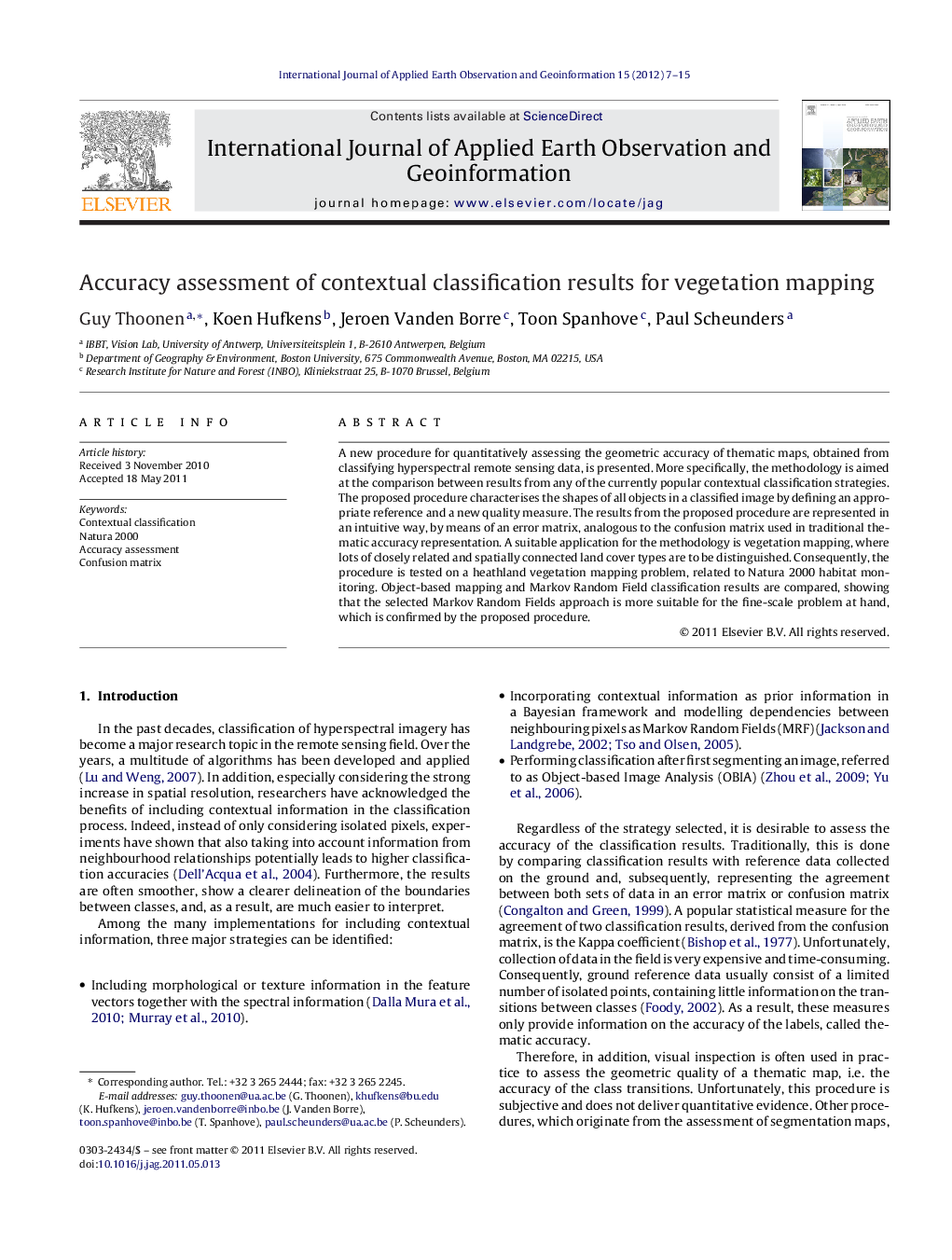| Article ID | Journal | Published Year | Pages | File Type |
|---|---|---|---|---|
| 4465018 | International Journal of Applied Earth Observation and Geoinformation | 2012 | 9 Pages |
A new procedure for quantitatively assessing the geometric accuracy of thematic maps, obtained from classifying hyperspectral remote sensing data, is presented. More specifically, the methodology is aimed at the comparison between results from any of the currently popular contextual classification strategies. The proposed procedure characterises the shapes of all objects in a classified image by defining an appropriate reference and a new quality measure. The results from the proposed procedure are represented in an intuitive way, by means of an error matrix, analogous to the confusion matrix used in traditional thematic accuracy representation. A suitable application for the methodology is vegetation mapping, where lots of closely related and spatially connected land cover types are to be distinguished. Consequently, the procedure is tested on a heathland vegetation mapping problem, related to Natura 2000 habitat monitoring. Object-based mapping and Markov Random Field classification results are compared, showing that the selected Markov Random Fields approach is more suitable for the fine-scale problem at hand, which is confirmed by the proposed procedure.
► New procedure for accuracy assessment of contextual classification results. ► New reference and new measure. ► Edge confusion matrix to characterise shapes of objects. ► Tested on MRF and object-based classification.
